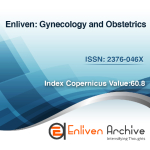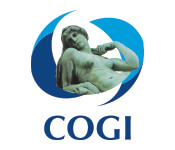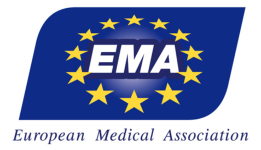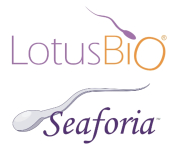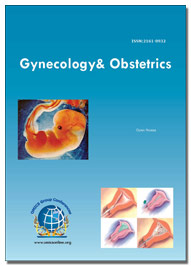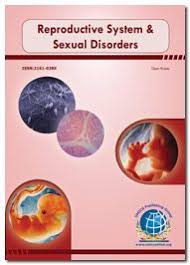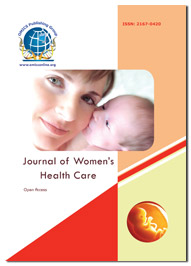Theme: Managing reproductive life : Sexuality and Fertility
Reproduction Fertility 2019
ME Conferences takes the immense Pleasure to invite participants from all over the world to attend the "International Conference on Women's Health, Reproduction and Fertility”, to be held in Abu Dhabi, UAE during April 08-09, 2019.
This gathering will strengthen the ideas about Reproduction and different aspects related to it. We attempt to provide a perfect stage to Researchers, Scholars, and key Speakers to share data and experiences and empower people with their deep knowledge of Human Reproduction and aspire them to fight against the worldwide risk related to it. The convention meeting consists of discussion and workshops, keynote speeches, absolute talks, poster presentations, e-Poster introductions and a panel session on cutting-edge research traits within the field of Reproduction and Fertility.
Reproduction Fertility 2019 provides a driving platform for a focused plan of the current research in the field of Reproductive biology which incorporates, visitor addresses, keynotes, symposiums, workshops, presentations, board talks, poster sessions, and various summits for the all over participants. This meeting will unite many representatives which include worldwide Specialists, Researchers, Analysts, Understudies, Nurses, Exhibitors, Investigators, gynecologists, Endocrinologists, Pharmacists, Professors and Industrial Pharmaceuticals and Business delegates everywhere in the globe to connect us Abu Dhabi in April 2019 for the 2-day Reproduction fertility meet. Reproduction and Fertility deal with the importance of Women’s health and issues related to it. It includes a detailed understanding of Sexually transmitted diseases, Fertility, Reproductive technologies in practice, Female Reproductive cancers, Reproduction immunology and toxicology and many more.
Why Reproduction Fertility 2019?
- Poster - paper presentations and world-class exhibitions
- Opportunities to gain a deeper understanding of the topic
- Intensifying Interactive knowledge
- Meet Academics and Industrial professionals to get inspired
- Great credits for the work in progress
- Valuable talks and symposiums from renowned speakers
- Meaningful sessions and accomplishments
With members from over the world focused on learning about Reproduction and its advances; this is your best opportunity to reach the largest assemblage of participants from the Reproductive biology community. Conduct presentations, distribute information, meet with current and potential scientists, make a splash with new advancements and developments in Human Reproduction, and receive name recognition at this 2-days event.
Target Audience
- Obstetrics and Gynecologists
- Specialists in IVF
- IVF Centers
- Gynecological Pathologists
- Gynecological Oncologists
- Directors of Maternity Hospitals
- Endocrinologists
- Infertility specialists
- Heads of the Obstetrics & Gynecology Departments
- Pharmacotherapists
- Nursing scholars
- Psychologists
- Students of Medicine Disciplines
- Upcoming Researcher
- Pharmacists
- Anesthesiologist
- Family Medicine Physicians and General practitioners
- Pharmacologists
- Health care systems and Hospitals
- Clinical Toxicologists
- IVF Associations and Societies
- Societies of Andrology and Gynecology
- Obstetrics Community
- Health Care Professionals
Track 1: Women’s Health and Life Style
Women's Health has been a long concern but nowadays it has reached a supreme point of concern. Generally, men and women share comparative health challenges; the only dissimilarity is that the health of women merits specific consideration. There are processes, for example, labor, and pregnancy that convey wellbeing dangers and are the main source of death in young women somewhere in the range of 15 and 19 years of age. The leading cause of death among women of reproductive age is HIV/AIDS which is due to biological factors and limitation of women’s knowledge about HIV and unsafe sex. Lack of contraception results in unwanted pregnancies, unsafe abortions, sexually transmitted infections, etc.
Track 2: Stem Cells and Reproductive Diseases
Stem cells are undifferentiated cells which are capable of reproducing themselves (self-renewal) and differentiating into different types of cells. The two main properties of stem cells are self-renewal and potency which allow them to differentiate into any kind of cells. As of late in 2004, two investigations demonstrated that ovaries do contain stem cells which form oocytes in grown-ups and that can be cultured in vitro into developing ones. Another investigation gave novel confirmation of endometrial recovery by stem cells in women who got bone marrow transplants. This finding has the potential for utilization in the treatment of uterine disorders. It also supports a new theory for the cause of endometriosis, which is a condition in which cells similar to those in the endometrium grows outside of it.
Track 3: Reproductive Technologies in Medicine
Regenerative innovation encases all present and anticipated employment of innovation in Human and Animal Reproduction. This incorporates ARTs (Assisted Reproductive Technology), contraception and others. ART is the utilization of reproductive technology to treat infertility and low fertility and is currently the only type of reproductive technology in clinical utilize. Assisted Reproductive Technology can be prescribed when other fertility medicines were not effective or when there is extreme male factor infertility, serious endometriosis or tubal impediment.
Track 4: Fertility & Infertility: Men and Women
Fertility is the capacity to produce posterity and conceive. Human fertility depends upon various elements like nourishment, sexual conduct, affiliation, culture, instinct, endocrinology, timing, money-related issues, a way of life, feelings, and so forth. A woman’s most fertile time is during ovulation. Ovulation occurs within 11th to 21st day of a woman’s cycle. Infertility is a condition which is found in both men and women, and both of them are affected almost equally. Infertility in men and lady can likewise be treated with ARTs.
Track 5: Fertility Surgery and IVF Treatment
In men, sterility is treated with:
- Surgery, if the cause may be a varicocele (widening of the veins within the scrotum) or a blockage within the vas deferens.
- Antibiotics to cure contaminations in the reproductive organs.
- Medications and counseling to medicate issues with ejaculation or erection.
- Hormone treatments if the problem is with hormone imbalance.
In women, sterility is treated with:
- Fertility medications and hormones to help the restoration of hormone levels and make the woman ovulate.
- Surgery to remove tissue which is blocking fertility or to open blocked fallopian tubes
In vitro fertilization is a type of assisted reproductive technology which is used in infertility treatment. In IVF an egg is fertilized with sperm outside the body in a liquid medium in a lab. The zygote goes through embryo culture for a period of 2–6 days, and is then implanted into the woman's uterus, for a successful pregnancy.
Track 6: Female Infertility
In the United States, the average age of menarche is around 12.5 years. In postmenarchal girls, in about 80% of the cycles, ovulation does not actually take place in the first year, 50% in the third and 10% in the sixth year. Menopause occurs between ages 48 and 55. This is the end of the fertile phase in a woman's life. Age is the single most important factor which affects women’s fertility and chances of conceiving and having a child. With women, the most widely recognized explanations behind infertility are endometriosis, polycystic ovary disorder (PCOS), tubal blockage and progressed maternal age that influences egg amount/quality. Infertility influences around 10% of American couples of childbearing age which is around 6.1 million. Obesity in conceptive wellbeing additionally prompts infertility and heavy menstrual flow.
Track 7: Adolescent and Maternal Health
Adolescence is a sensitive phase in Human development. It represents the transformation from childhood to physical and psychological maturity. The very best proportions of early childbearing measure are found in the Sub Saharan region, where birth rates among adolescents reach over two hundred births per a thousand women age 15–19. Countries like the Central African Republic, Niger, Chad, Angola and Mali prime the list of states with the highest adolescent birth rate (above 178).
Maternal health includes the health of women throughout childbirth, pregnancy and also the postnatal period. It encompasses the healthcare aspects of preconception, prenatal, postnatal care, and family planning. The significant explanations behind maternal morbidity and mortality incorporate discharge, risky abortion and obstructed labor.UNICEF has upheld the national Ministry of Health and Family Welfare to enhance the quality and scope of high effect maternal health services.
Track 8: Pediatrics and Neonatology
In general, Pediatrics is the branch of medicine that involves the medical care of infants, children, and adolescents. The subject contains a few sub-disciplines counting common perspectives of pediatrics, pediatric cardiology, neurology, gastroenterology, hematology, nephrology, endocrinology, neonatal and adolescent medicine, oncology, neonatal and prenatal ethical considerations etc. Neonatology is a subspecialty of pediatrics that includes the therapeutic care of new-born babies, who are sick or require special medical care as a result of prematurity, low birth weight, intrauterine growth retardation, birth defects, and pulmonary hypoplasia or birth asphyxia.
Track 9: Sexually Transmitted Infections
Sexually Transmitted Infections are infections that are spread by sexual activity, vaginal intercourse, anal sex, and oral sex. Symptoms of this disease include vaginal discharge, penile discharge, ulcers on or around the genitals, and pelvic pain. These are categorized into Bacterial infections, Viral STIs and Parasitic STIs. Bacterial infections comprise of gonorrhea, chlamydia, and syphilis. Viral infections consist of HIV/AIDS, genital herpes, and genital warts. Example of Parasitic STIs is Trichomoniasis. Safer sex practices decrease the risk. Comprehensive sex education during school is also useful.
Track 10: Polycystic Ovary Syndrome
PCOS is a common hormonal disorder among women of reproductive age. It is a set of symptoms which is due to raised androgens (male hormones) in females. Unpredictable or no menstrual periods, substantial periods, overabundance body and facial hair, acne, pelvic pain, trouble getting pregnant, and patches of thick, darker, smooth skin are some of the signs and symptoms of PCOS. It is due to both environmental and genetic factors. It is incurable. The regularity of periods, excess hair growth and acne may be improved by birth control pills. Metformin and anti-androgens may also help. Efforts made to improve fertility consist of weight loss, clomiphene, or metformin. In vitro fertilization is also used. It is the most frequently occurring endocrine disorder among women between the ages of 18 and 44. About 2% to 20% of this age group is affected by this. It is considered one of the main causes of poor fertility.
Track 11: Obstetrics and Gynecology
Obstetrics is the medicinal forte that focuses on surgical and medical care before, during, and after pregnancy. It centers on maintaining and caring woman’s overall health during maternity. Gynecology is the division of medicine which is associated with women’s reproductive system (breasts, vagina, uterus, and ovaries) and their reproductive health. It focuses on the care, diagnosis, and treatment of women’s reproductive system. Authorities in obstetrics and gynecology practice in a hostile situation and face strain to enhance medicinal services quality. The Harvard Medical Practice Study found that 1.5% of hospitalized obstetrics patients encounter an adverse situation and that 38.3% of these results were identified with careless care.
Track 12: Female Reproductive Cancer
Reproductive cancers are an uncontrolled advancement and development of abnormal cells that emerge from the reproductive organs. In America, at customary intervals, a woman is discovered with a gynecologic tumor. It is assessed that there will be 91,730 new cases investigated in the United States this year alone - lamentably achieving a foreseen 28,080 passings. Reproductive cancers are often treated with chemotherapy, surgery, radiation, hormone therapy, or a combination of these used together.
Track 13: Pregnancy and Child Birth
Pregnancy, otherwise called gravidity or gestation, is the time amid which at least one posterity develops inside a woman. A numerous pregnancy includes in excess of one posterity, for example, with twins. Pregnancy can happen through Assisted Reproductive Technology or Sexual intercourse. This is a little more than nine lunar months, where every month is around 29½ days. Childbirth regularly occurs around 40 weeks from the last menstrual period (LMP). An embryo is a developing posterity amid the initial two months following conception, after which, the term fetus is utilized until birth. Indications of early pregnancy may incorporate missed periods, delicate bosoms, vomiting, hunger, and successive urination. Pregnancy might be affirmed with a pregnancy test.
Track 14: Drug Management During Pregnancy
Amid pregnancy, drugs are frequently required to treat certain disarranges. Generally, when potential advantage exceeds known dangers, medications might be considered for treatment of disorders amid pregnancy. The most ordinarily utilized drugs incorporate antihistamines, antiemetic, analgesics, antimicrobials, hypnotics, diuretics, tranquilizers, etc. The development and improvement of the fetus might be influenced by drug treatment later in pregnancy. Cases of medications that may influence fetal improvement are Angiotensin, Antithyroid drugs, Benzodiazepine, β blocker, etc. However, no less than 33% of every single pregnant lady in the United Kingdom is recommended at least one course of medication treatment.
Track 15: Obstetric Analgesia and Anesthesia
Obstetric anesthesia or obstetric anesthesiology, otherwise known as ob-gyn anesthesia or ob-gyn anesthesiology is a sub-specialty of anesthesiology that provides peripartum analgesia for labor and anesthesia for cesarean deliveries. Administration of anesthesia for obstetric and non-obstetric surgery during pregnancy has always been a challenge to the attending anesthesiologists. An obstetric anesthesiologist's practice may comprise to a great extent of overseeing pain amid vaginal deliveries and regulating anesthesia for cesarean areas; in any case, the scope is extending to include anesthesia for both maternal as well as fetal procedures. Obstetric anesthetists are broadly utilized in the midst of the work pain. Bupivacaine is the foremost usually utilized medicine that makes the more prominent tangible square.
Track 16: Hormones and the Immune System
Females have a more vivacious cell and humoral safe reactions, they are more impervious to numerous contaminations, and they endure a higher rate of autoimmune diseases as compared to males. The variations in sex hormones are accompanied by the differences in immune responses between the sexes and the reproductive phases in women. However, the actions of sex hormones are extremely complex. The clearest impacts of sex hormones on the resistant reaction are the impacts of these hormones on the quantities of circulating immune cells. Sex hormones have been appeared to influence these cell numbers by influencing proliferation or apoptosis of the cells or by enrollment of new cells from the bone marrow. Distinguishing reproductive methods, including ovulation, menstrual cycle, are affected by the immune framework. A condition in which immunology expects a related part is pregnancy.
Track 17: Reproduction Endocrinology and Toxicology
Reproductive toxicology is an intricate subject overseeing three portions - parent, placenta, and newborn child and the consistent changes that occur in each. Toxin exposure to an assortment of naturally occurring or man-influenced chemicals can adjust hormone levels, bringing about a modification in reproductive potential and possible fertility. Reproductive Endocrinology is the total investigation of female hormone framework from youth through menopause with the elements of pituitary, ovaries, and infertility. It encloses zones, for instance, early embryonic development, gametogenesis, reproductive progression, fertilization, pregnancy, endocrinology of reproduction, reproductive immunology.
Scope and Importance:
The intention of the International Conference on Women's Health, Reproduction and Fertility 2019 is to create global awareness about the Women’s Health among the world and get to know about the advanced techniques used for treatment and diagnosis of Infertility and various Reproductive disorders.
The principal point of the statistical surveying is to build the attention to problems related to Reproductive systems among individuals and to recognize the reproductive health market scene and additionally imperative advancements. The symposium/discourses in this conference will have a look at the reproductive well-being.
Here this gathering is to give in detail data in regards to the fragmental strategies which are utilized in the treatment of Gynecological cancers, Infertility, PCOS, Sexually Transmitted Infections, etc. that are extremely useful. This entitles to oversee pregnant ladies from the Psychological issue that influence the women to get confounded about the pregnancy and work.
Women’s Health Market
In 2010, the worldwide population accounted for around 6.15bn of which 49.7% was women. A similar pattern is relied upon to be existing by 2025. By 2025, the total population is determined to be 8.19bn of which 49.5% will be women. This determined figure clarifies the development capability of the Women’s Health showcase until 2025. It is usually seen that ladies live longer when contrasted with men and experience fast hormonal, physiological and emotional changes in their long lifetime. This factor is currently operating as a catalyst for giving better instruction and medicinal services administrations to women in all nations over the globe.
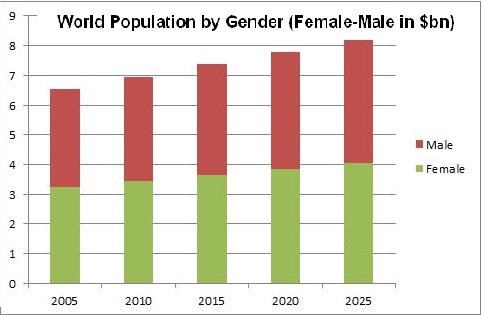
The worldwide market for women’s wellbeing therapeutics will develop from about $33.0 billion in 2015 to almost $40.6 billion by 2020, with a compound annual growth rate (CAGR) of 4.2% for the time of 2015-2020. The advanced research on an investigation of women health care has stated that the global women healthcare market is elided upon to achieve USD 5.13 billion by 2025. The Global Women’s Health Market was evaluated to be 30.88bn of every 2016 and anticipated that would reach more than 51.3bn by 2025 at a CAGR of 5.85% as assessed by various autonomous research firms.

Studies display that North America captured the most astounding share of the worldwide Women's Health Market taken after by Europe, Asia Pacific, Latin America, Middle East and Africa in 2018.
Fertility Services Market
Fertility services include distinctive techniques used to treat fertility and genetic issues and help with conception. These services incorporate diverse ART strategies, helping couples or single guardians around the globe. The Global Fertility Services Market was esteemed at $16,761 million of every 2016 and is evaluated to reach $30,964 million by 2023, enlisting a CAGR of 9.3% from 2017 to 2023. Worldwide IVF administrations market produced $10,587 million out of 2017 and is anticipated to reach $22,467 million by 2025, developing at a CAGR of 9.8% from 2018 to 2025.
The worldwide market for drugs for fertility should reach $4.2 billion by 2022 from $3.4 billion of every 2017 at a CAGR of 4.3%, from 2017 to 2022. The overall market for reproductive products and technologies is assessed to accomplish incomes of about $16.1 billion in 2013. In 2018, the anticipated incomes will probably reach $19.6 billion, showing a CAGR of 4.1%.
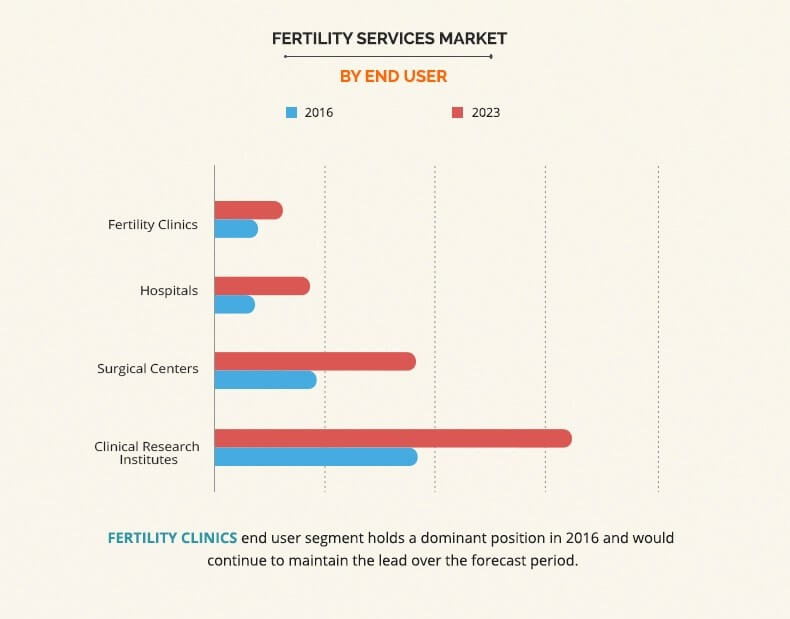
Worldwide Contraceptive market was evaluated to be $19.8bn in 2015 and is ready to develop and to reach $33.6bn by 2023 with a CAGR development of 6.8% amid this period. Developing requests of the populace and increased instances of STDs, expanded request for undesirable pregnancy control, increased awareness among ladies driving the development of this contraceptive market.

Why Abu Dhabi?
Abu Dhabi is the capital of the United Arab Emirates, furthermore capital of Emirates of Abu Dhabi; this is the second most crowded city in UAE. It is on the south-eastern side of the Arabian Peninsula, the city is the money related and social stay of an altogether more noteworthy metropolitan range. This is the standout amongst the most crowded city when women’s health issues are concerned the rate of which gradually increases due to changes in modern lifestyle according to the World Health Organization. The 'world's close-by neighbor', at the intersection of Africa, the Middle East, and Asia, Abu Dhabi offers basic access to a critical number of the world's greatest and quickest prospering economies. Persistently a trading society, it has brought its 'open portals' spirit into the front line world, pulling in outside business and speculation through encouraged business zones, zero compensation cost and VAT, and an extraordinary corporate expense evaluation course of action.
The high grounds of picking Abu Dhabi are different: a fundamental overall network for business, exchange, industry, and tourism, with a dynamic workforce and an organization which continues placing assets into key structure and transportation assignments to ensure a prosperous monetary future.
Women Health Care Hospitals in Abu Dhabi
- Danat Al Emarat Hospitals for Women & Children-Abu Dhabi.
- Al Corniche Women's Health Center
- Health Plus Diabetes & Endocrinology Center
- Health Plus Children’s Speciality Center
- Al Noor Hospital Of Obstetrics & Gynaecologists
- NMC Royal Women's Hospital
- HealthPlus Fertility & Women's Health Center
- National Screening Center for Women and Child
- HealthHealthPlus Diabetes & Endocrinology Center
Related Associations and Societies
Middle East
Middle East Fertility Society (MEFS), Syrian American Medical Society, Iranian Scientific Association of Embryology and Reproductive Biology, Iranian Scientific Association of Endocrinology, Iranian Scientific Association of Reproductive Medicine, Turkish Society of Obstetrics and Gynecology, Turkish Society for Reproductive Medicine, Turkish Infertility Foundation, Turkish Medical Association, Iraqi Society of Obstetrics & Gynecology (ISOG), Saudi Society of Obstetrics & Gynecology, Saudi Obstetrical and Gynaecological Society, Saudi Gynecology Oncology Group
USA
American Association of Gynecologic Laparoscopists, American College of Obstetricians & Gynecologists, The Association of Physician Assistants in Obstetrics and Gynecology, Association of Professors of Gynecology and Obstetrics, Central Association of Obstetricians and Gynecologists, Gynecologic Cancer Foundation, Society of Gynecologic Oncologists (SGO), International Urogynecological Association (IUGA), American Osteopathic Board of Obstetrics and Gynecology, American Society Reproductive Medicine, American College of Nurse-Midwives, National Association of Nurse Practitioners in Women's Health (NPWH), Physicians for Reproductive Health
Europe
The European Society of Contraception and Reproductive Health, German Foundation for World Population, European Association of Pediatric and Adolescent Gynecology, Italian Society for Obstetrics and Gynecology, European board & college of Obstetrics and Gynecology, European Society of Gynecological Oncology, Austrian Society of Sterility, Infertility and Endocrinology, Croatian Society for Gynecological Endoscopy, German Society of Gynecological and Obstetrical Endoscopy, Hungarian Society for Gynecological Endoscopy, Italian Society for Gynecological Endoscopy (SEGI), Dutch Society for Gynaecological Endoscopy and Minimally Invasive Surgery, Romanian Society of Minimally Invasive Surgery in Gynecology
Asia Pacific
Asia Pacific Pediatric Association , Brazilian federation of gynecology and obstetrics associations, The Obstetrical and Gynaecological Society of Hong Kong, The Indonesian Society of Obstetrics & Gynecology, Obstetrical and Gynaecological Society of Malaysia, Obstetrical & Gynaecological Society of Hong Kong OGSHK, Obstetrical & Gynaecological Society of Singapore, Indonesian Obstetrics & Gynecology Society, Philippine Obstetrical & Gynecological Society, INC, Russian Society Obstetricians Gynaecologists, Asia Pacific Council on contraception
Conference Highlights
- Women’s Health and Life Style
- Stem Cells and Reproductive Diseases
- Reproductive Technologies in Medicine
- Fertility & Infertility
- Fertility Surgery and IVF Treatment
- Female Infertility
- Adolescent and Maternal Health
- Sexually Transmitted Infections
- Polycystic Ovary Syndrome
- Obstetrics and Gynecology
- Female Reproductive Cancer
- Drug Management During Pregnancy
- Reproduction Endocrinology and Toxicology
- Hormones and the Immune System
- Pregnancy and Child Birth
- Obstetric Analgesia and Anesthesia
- Pediatrics and Neonatology
To share your views and research, please click here to register for the Conference.
To Collaborate Scientific Professionals around the World
| Conference Date | April 08-09, 2019 | ||
| Sponsors & Exhibitors |
|
||
| Speaker Opportunity Closed | Day 1 | Day 2 | |
| Poster Opportunity Closed | Click Here to View | ||
Useful Links
Special Issues
All accepted abstracts will be published in respective Our International Journals.
Abstracts will be provided with Digital Object Identifier by













